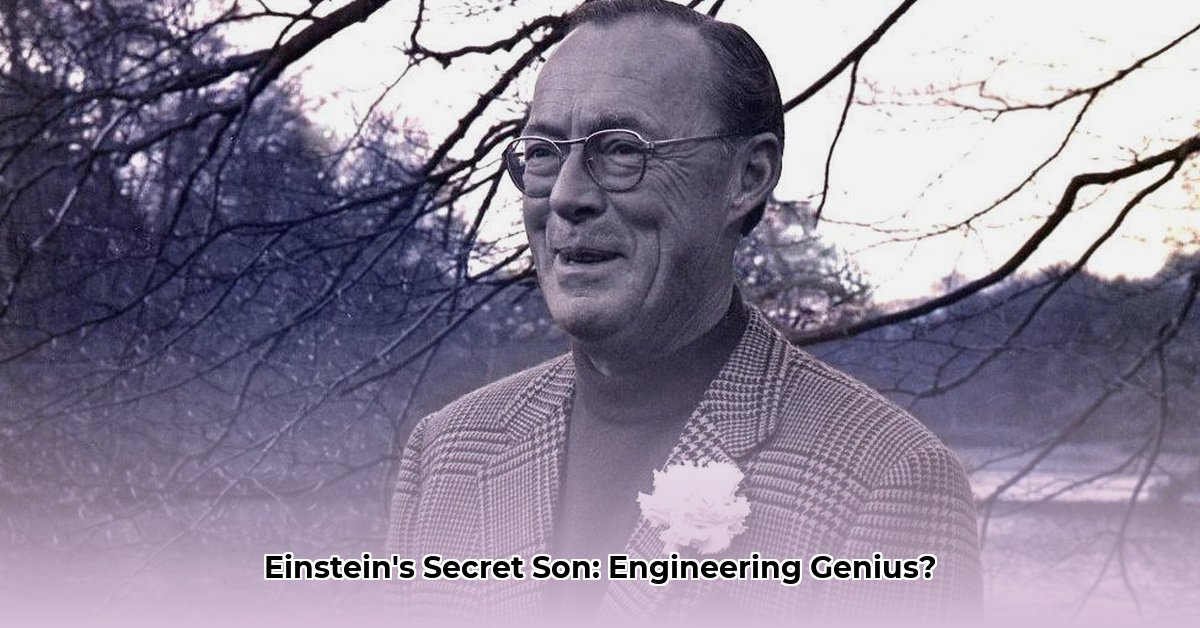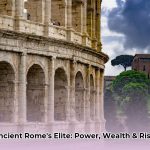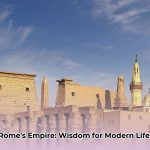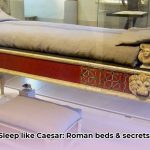You know Albert Einstein, the genius who changed how we understand the universe? Well, his grandson, Bernhard Caesar Einstein, was pretty brilliant too, though his story isn’t as famous. This article explores the fascinating life and surprisingly significant achievements of this lesser-known Einstein. We’ll uncover his inventions, look at how his work shaped technological advancements, and explore his impact on the field of engineering. For more details, check out this detailed biography. Get ready to discover a hidden history of engineering innovation – a story of a truly remarkable man who deserves to be better known.
Bernhard Caesar Einstein’s Scientific Achievements
Bernhard Caesar Einstein. The name might not immediately spark recognition like his famous grandfather’s, but this grandson carved his own path, leaving a mark on engineering and technology that deserves our attention. While Albert Einstein’s theories revolutionized physics, Bernhard quietly built a successful career, contributing significantly to the advancement of electronics and laser technology. His story is a compelling blend of innovation, perseverance, and a life largely lived outside the glaring spotlight of his family’s legacy. Let’s dive into the fascinating world of Bernhard Caesar Einstein’s scientific achievements and discover the impact of his work.
A Life Less Ordinary: Unraveling the Details with Biographical Information
Even the simplest facts about Bernhard’s life seem shrouded in a bit of mystery. Born on July 10, 1930, his exact birthplace is a matter of some debate, with sources pointing to either Dortmund, Germany, or Bern, Switzerland. He was the son of Hans Albert Einstein and Frieda Knecht. This uncertainty reflects the lack of comprehensive biographical information available about this intriguing figure. Regardless of where he first saw the light of day, Bernhard’s educational background was undeniably impressive. He attended ETH Zurich (Swiss Federal Institute of Technology), a prestigious institution renowned for its rigorous engineering programs, and later pursued studies at UC Berkeley. This strong academic foundation provided him with the knowledge and skills that fueled his later engineering successes. It’s tempting to wonder how much his family’s intellectual heritage influenced his choice of career and his academic focus. While definitive answers are elusive, the available information paints a picture of a determined individual making his own way in the world.
Engineering Prowess: Patents and a Career in Industry – Unlocking Technological Innovation
What we do know is that Bernhard held a number of US patents, indicative of his problem-solving skills and innovative approach. His work primarily revolved around electron tube technology, light amplification and laser technology – fields that were exploding with new possibilities during his career. His association with major corporations such as Texas Instruments and Litton Industries, speaks volumes about his expertise and the value he brought to these companies. Imagine the pressure-cooker environment of those cutting-edge tech firms, the feverish pace of innovation, the relentless competition. While specific details of his contributions remain somewhat obscured, they likely involved pushing the boundaries of what was technologically feasible. It’s captivating to picture him working alongside other gifted scientists and engineers, contributing his own unique insights to groundbreaking projects. He also worked at the Swiss Army Research Lab in Thun, Switzerland, obtaining a further US patent and suggesting his inventions might have had military applications. This aspect adds another layer to his story, highlighting the multifaceted nature of his engineering achievements and their likely impact on both civilian and military technologies. The exact details of his inventions often remain vague.
Here’s a brief overview:
- Bernhard Einstein held multiple US patents related to light amplification (enhancing the intensity of light) and laser technology.
- He contributed his expertise to major corporations like Texas Instruments (semiconductor company) and Litton Industries.
- He worked at the Swiss Army Research Lab hinting at military applications (uses of technology in the military) of his inventions.
This table illustrates that, while we can piece together a picture of Bernhard Einstein’s career, significant gaps remain. Further research is needed to precisely define his contributions.
| Company | Probable Contribution Area | Available Evidence | Speculative Possibilities |
|----------------------|---------------------------------------------------------------------------|-----------------------------------------------------------------------------------------|-------------------------------------------------------------------------------------------------------------------------------|
| Texas Instruments | Semiconductor technology, laser diodes, and electronic devices | Employment history, patent portfolio, company focus, advancements in semiconductor tech| Advances in miniaturization, efficiency, and performance of electronic devices; development of innovative laser applications |
| Litton Industries | Aerospace and defense electronics, light amplification devices, laser systems | Employment history, company specialization, US patents | Contributions to guidance systems, laser weaponry, night vision technology |
| Swiss Army Research Lab | Military laser technology, optical communication systems | Employment history, nature of the lab's research, US patent | Developments in encrypted communication, targeting systems, advanced reconnaissance technologies |
A Technological Landscape in Transformation: The Cold War Context and Military applications
Bernhard’s professional life unfolded during a period of intense technological change, fueled in large part by the Cold War. Both superpowers, the US and the USSR, poured massive resources into advancing electronics and laser technology. This environment gave rise to a flurry of innovation, with researchers constantly vying to push the boundaries of what was possible. Bernhard, working within this dynamic context, likely faced significant challenges and pressures. His achievements, therefore, stand out as remarkable feats of ingenuity within a fiercely competitive and rapidly evolving field. His work probably reflected the urgency and focus on advancements within that specific time. The Cold War era undoubtedly shaped both the direction and the significance of his engineering endeavors, driving his motivation to contribute to technological progress.
A Legacy Worth Further Exploration and Inventions
Bernhard Caesar Einstein’s contributions to engineering, although less celebrated than his grandfather’s, represent a significant legacy. While many details remain unknown, what evidence we do possess suggests a life of remarkable achievement. Although this article has tried to paint a clearer picture of his life and work, many unanswered questions linger. His inventions, the specifics of his roles at various companies, and the true extent of his impact need further investigation. The mysteries surrounding Bernhard’s life only heighten the intrigue and inspire further research. His story reminds us of the countless unsung heroes of scientific advancement, the brilliant minds who build the foundation upon which future innovations are laid. To fully appreciate his legacy and provide a comprehensive account of his contributions requires a dedicated effort to uncover and analyze further information. The story of Bernhard Caesar Einstein, a fascinating chapter in the history of engineering, is just waiting to be fully told.
How Many Patents Did Bernhard Caesar Einstein Hold and What Were Their Applications?
Key Takeaways:
- Bernhard Caesar Einstein, Albert Einstein’s grandson, pursued a successful engineering career, diverging from his grandfather’s path in theoretical physics.
- He obtained multiple patents, primarily focused on light amplification technologies, electron tubes, and laser systems, but the exact number and specific applications remain elusive.
- His work significantly contributed to advancements in electron tubes and laser systems during a pivotal era in technological development.
- Further research is needed to fully document and evaluate his engineering contributions and their impact on various industries.
A Life Beyond the Shadow of Genius with Innovative Ideas
Bernhard Caesar Einstein. The name conjures images of intellectual giants and groundbreaking theories. But what about the man himself? He wasn’t a theoretical physicist like his famous grandfather. Instead, he carved his own niche. He became an engineer, quietly contributing to mid-20th century technological leaps. This less-celebrated Einstein deserves recognition for his own intellectual endeavors. So, how many patents did Bernhard Caesar Einstein hold, and what were their applications? That’s the question driving our inquiry. Unfortunately, a definitive answer proves challenging due to limited availability of detailed records.
The Elusive Patent Portfolio & Technology
Records concerning Bernhard’s patents are frustratingly scarce. While several sources mention “multiple” or “four” patents relating to light amplification, electron tube technology, and laser systems, specific details are lacking. This lack of readily available information presents a significant hurdle for researchers. Imagine trying to piece together a jigsaw puzzle with many missing pieces – that’s the challenge. This scarcity highlights a need for further investigation into patent databases, company archives, and potentially even contacting family members or former colleagues. The patents exist, but finding them demands dedicated research. While demonstrably successful, his professional life remains shrouded in relative obscurity. Uncovering more information about his patents is crucial to fully appreciate his contributions.
Illuminating Advancements: Contributions to Light Amplification Technology
Despite the mystery surrounding the precise number of patents, it’s clear Bernhard Einstein made significant contributions to the field of light amplification. He worked for reputable firms like Texas Instruments and Litton Industries, companies renowned for their contributions to electronics and defense technology. His work almost certainly involved electron tubes and laser systems; vital components in countless applications, from communications to military technologies. His patents likely facilitated advancements in night vision technology and optical communication systems.
Did his grandfather’s fame help or hinder him? That’s a fascinating question, one that deserves further exploration. It’s a testament to his individual talent and perseverance in carving his own path in the field of engineering.
The Value of Understated Achievements and Hard Work
Bernhard’s story reminds us that significant contributions aren’t always accompanied by widespread fame. His legacy, while less visible than that of his grandfather, is no less important. He dedicated his life to engineering, contributing to advancements that shaped modern technology. His story highlights the vital role of many unsung engineers who build the technical foundation upon which future advancements are made.
A Call to Action: Further Research and Preserving the Legacy
The lack of detailed information about Bernhard Caesar Einstein’s patents and










